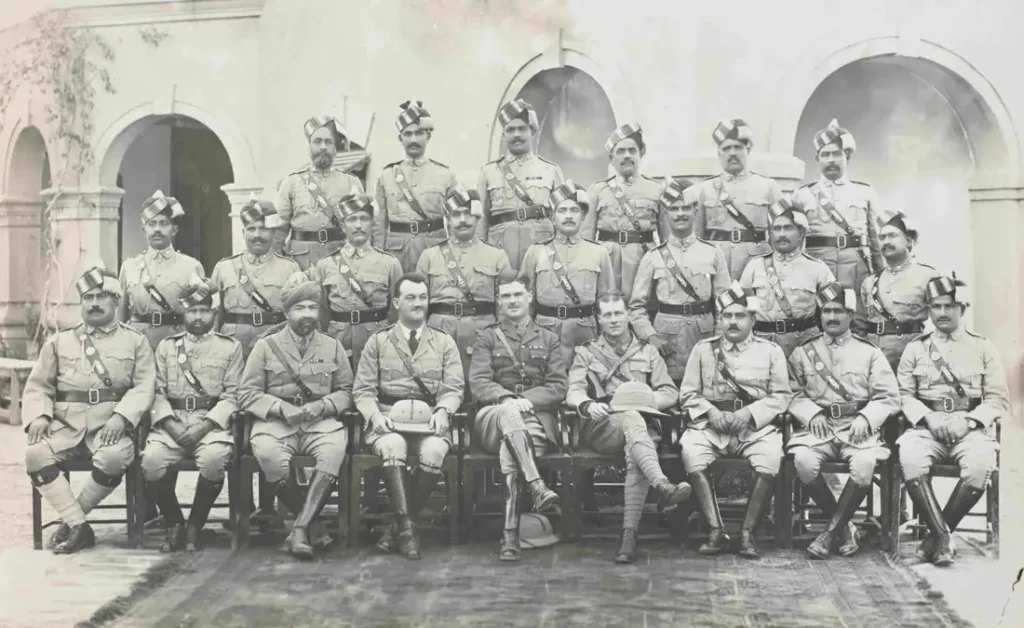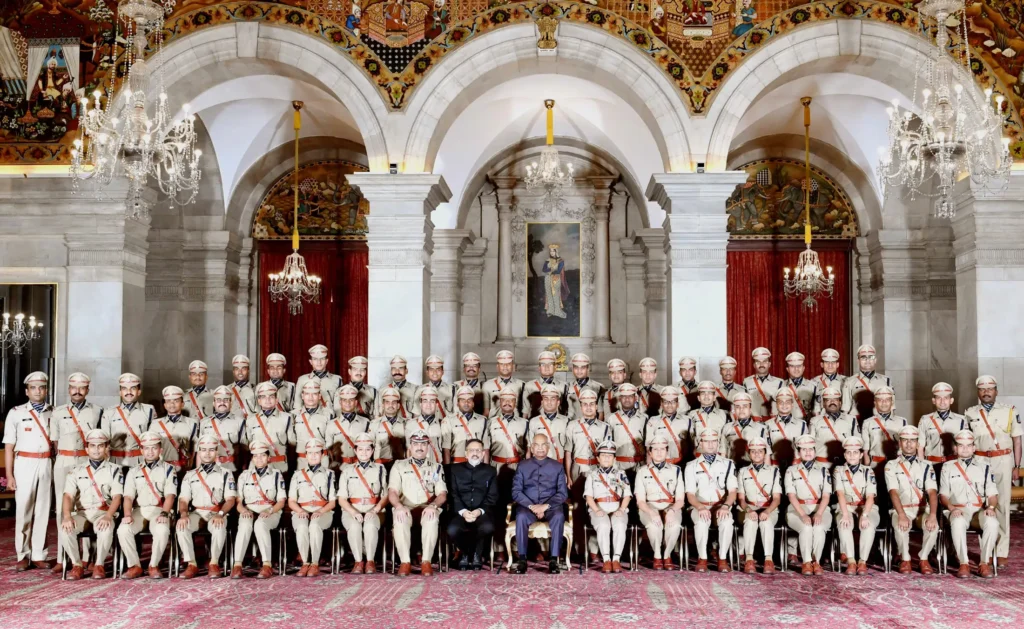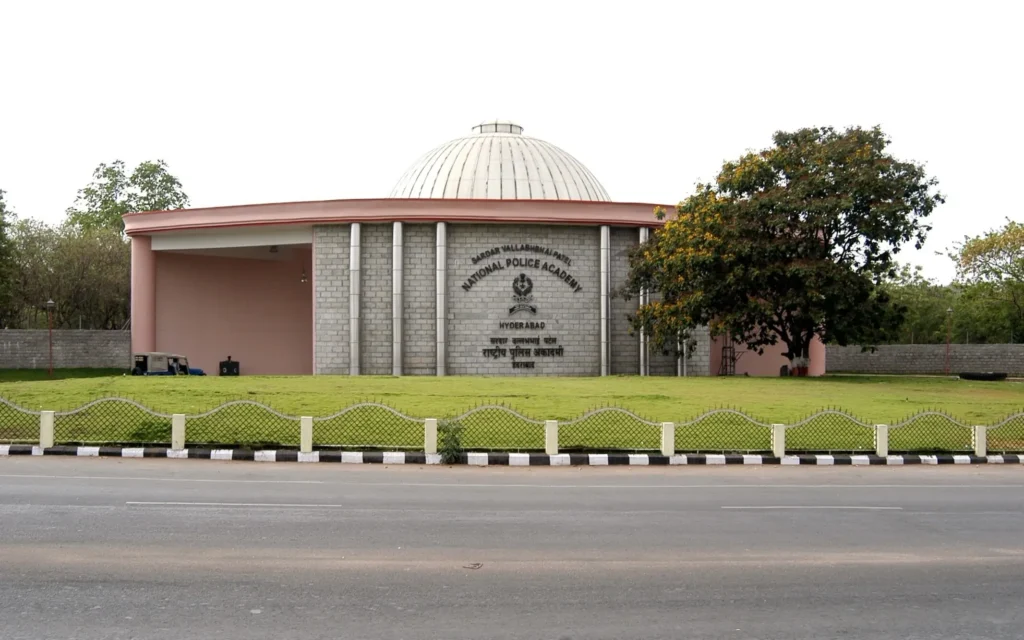The Indian Police Service (IPS) stands as one of the three prestigious All India Services, alongside the Indian Administrative Service (IAS) and the Indian Forest Service (IFS), forming the backbone of India’s administrative framework. Established in 1948, the IPS replaced the colonial Indian Imperial Police post-independence, embodying a legacy of leadership, discipline, and public service. Governed by the Ministry of Home Affairs, the IPS provides senior officers to lead state police forces, Central Armed Police Forces (CAPFs), and key investigative and intelligence agencies like the Central Bureau of Investigation (CBI) and Research and Analysis Wing (R&AW).
This article delves into the history, roles, recruitment, training, career progression, challenges, and societal impact of the IPS, offering a detailed exploration of its significance in India’s governance and security apparatus.
Table of Contents
Historical Evolution of the Indian Police Service (IPS)
The origins of the IPS trace back to the colonial era, with the Indian Imperial Police established in 1905 to maintain British control following the 1857 rebellion. The First Police Commission of 1865 laid down guidelines for a structured police system, emphasizing law enforcement, order maintenance, and crime prevention.

However, the system was designed to serve colonial interests, often prioritizing suppression over public welfare. Post-independence, the Indian Police Service was formalized in 1948 under the All India Services Act, 1951, aligning with the vision of a unified administrative structure to foster national integration. The IPS inherited the responsibility of leading state and central police forces, adapting to the democratic ethos of independent India.

The transition from the Imperial Police to the IPS marked a shift in priorities, with officers now tasked with upholding constitutional values, protecting citizens, and combating crime in a diverse and dynamic nation. The Sardar Vallabhbhai Patel National Police Academy (SVPNPA) in Hyderabad became the cornerstone of IPS training, named after India’s first Home Minister, who championed the creation of the All India Services. Over the decades, the IPS has evolved to address modern challenges like terrorism, cybercrime, and communal unrest, while retaining its core mandate of public safety and order.

Roles and Responsibilities of IPS Officers
IPS officers are the senior leaders of India’s police forces, entrusted with a wide array of responsibilities that span law enforcement, administration, and policy formulation. Their roles are multifaceted, requiring a blend of strategic oversight and operational involvement. Below are the key responsibilities of IPS officers:
- Maintaining Law and Order: IPS officers ensure public safety by managing police operations, responding to emergencies, and preventing civil unrest. They oversee crowd control during protests, festivals, and elections, ensuring peaceful conduct.
- Crime Prevention and Investigation: Officers lead investigations into serious crimes, including murder, terrorism, and organized crime. They supervise evidence collection, coordinate with forensic teams, and ensure legal compliance.
- Leadership of Police Forces: As Superintendents of Police (SP), Deputy Inspectors General (DIG), or Directors General of Police (DGP), IPS officers command state and central police units, setting operational strategies and policies.
- Counterterrorism and Intelligence: IPS officers posted to agencies like the Intelligence Bureau (IB) or National Investigation Agency (NIA) gather intelligence, combat terrorism, and address national security threats.
- Disaster Management: Leading the National Disaster Response Force (NDRF), IPS officers coordinate rescue and relief operations during natural calamities like floods, earthquakes, or cyclones.
- Community Engagement: Officers promote community policing, building trust through outreach programs and public awareness campaigns to prevent crime and foster cooperation.
For instance, during the 2019 Pulwama attack, IPS officers led coordinated efforts between the Central Reserve Police Force (CRPF) and state police to investigate and enhance security measures. Similarly, officers like Ajit Doval, the current National Security Advisor, exemplify the IPS’s role in high-stakes intelligence and counterterrorism, having earned the Kirti Chakra for his actions in Operation Black Thunder.
Recruitment Process for the IPS
Becoming an IPS officer is a highly competitive process, requiring candidates to clear the Union Public Service Commission (UPSC) Civil Services Examination (CSE), one of the toughest exams globally. The recruitment process is rigorous, designed to select candidates with intellectual acumen, physical fitness, and leadership potential. The stages of the IPS recruitment process are outlined below:
- Eligibility Criteria:
- Educational Qualification: Candidates must hold a bachelor’s degree from a recognized university. There is no specific field requirement, allowing graduates from diverse backgrounds to apply.
- Age Limit: Candidates must be between 21 and 32 years as of August 1 of the exam year, with relaxations for reserved categories (e.g., 5 years for SC/ST, 3 years for OBC).
- Physical Standards: Minimum height requirements are 165 cm for men and 150 cm for women, with relaxations for certain categories. Chest expansion and vision standards are also mandatory.
- Number of Attempts: General category candidates get 6 attempts, OBC candidates 9, and SC/ST candidates have unlimited attempts until the age limit.
- Civil Services Examination:
- Preliminary Examination: Comprises two objective papers—General Studies (Paper I) and Civil Services Aptitude Test (CSAT, Paper II)—each worth 200 marks. CSAT is qualifying (33% required), while Paper I determines merit for the Mains.
- Main Examination: Consists of nine descriptive papers, including four General Studies papers, two optional subject papers, an Essay paper, and two qualifying language papers (English and an Indian language). Total marks: 1750.
- Personality Test (Interview): A 275-mark interview assesses candidates’ personality, leadership qualities, and suitability for public service.
- Cadre Allocation:
- Successful candidates are allocated to state cadres based on their rank, preferences, and vacancies. Since 2017, cadres are grouped into five zones to promote national integration, with candidates indicating zone and cadre preferences.
In 2024, the UPSC CSE saw approximately 10 lakh applicants, with only about 1,000 clearing the final stage, of which a fraction were selected for the IPS. The competitive nature underscores the prestige and responsibility of the service.
Training of IPS Officers
The training of IPS officers is a comprehensive program designed to equip them with the skills, knowledge, and resilience needed for their roles. The process spans nearly two years, combining academic learning, physical training, and practical fieldwork. The training journey is structured as follows:
- Foundation Course: Conducted at the Lal Bahadur Shastri National Academy of Administration (LBSNAA) in Mussoorie, this 3-month course is common to all civil services. It focuses on governance, public administration, and inter-service camaraderie.
- Basic Training: Held at the Sardar Vallabhbhai Patel National Police Academy (SVPNPA) in Hyderabad, this 11-month phase includes:
- Physical Training: Rigorous drills, weapon handling, and fitness exercises to ensure physical readiness.
- Academic Learning: Subjects like criminal law, criminology, police management, and forensic science.
- Field Exposure: Attachments with police stations and district administrations for hands-on experience.
- District Practical Training: After SVPNPA, trainees undergo 6 months of on-the-job training as Assistant Superintendents of Police (ASP), learning operational policing under senior officers.
- Advanced Training: Upon completion, officers receive a Master’s Degree in Criminal Justice Management from NALSAR University of Law, enhancing their expertise.
The SVPNPA, established in 1948 and relocated to Hyderabad in 1974, is a premier institution, also offering in-service courses for senior officers. Its motto, “Satyam, Nyayam, Samvidhanam” (Truth, Justice, Constitution), reflects the IPS’s commitment to ethical policing. For example, officers like Hemangini Biswas, a 2020-batch IPS officer, credit SVPNPA’s holistic training for preparing them to handle complex law enforcement challenges.
Career Progression and Hierarchy
The IPS offers a structured career path, with officers progressing through ranks based on seniority, performance, and vacancies. The hierarchy is aligned with the 7th Pay Commission, which determines salary and allowances. Below is a detailed table of IPS ranks, roles, and approximate salary structures:
| Rank | Role | Pay Level (7th Pay Commission) | Basic Monthly Salary (INR) |
|---|---|---|---|
| Assistant Superintendent of Police (ASP) | Probationary rank; assists SP in district policing | Level 10 | 56,100–1,77,500 |
| Superintendent of Police (SP) | Heads district police; oversees law and order | Level 11–12 | 67,700–2,08,700 |
| Senior Superintendent of Police (SSP) | Manages metropolitan districts or larger jurisdictions | Level 13 | 1,18,500–2,14,100 |
| Deputy Inspector General (DIG) | Supervises multiple districts or heads state police bureaus | Level 13A | 1,31,100–2,16,600 |
| Inspector General (IG) | Oversees zones or central police organizations | Level 14 | 1,44,200–2,18,200 |
| Additional Director General (ADG) | Heads major state police bureaus or CAPFs | Level 15 | 1,82,200–2,24,100 |
| Director General of Police (DGP) | Heads state police force or central agencies like CBI, NIA | Level 16–17 | 2,05,400–2,25,000 |
- Entry-Level Roles: Fresh IPS officers start as ASPs for 2–3 years, handling training and supernumerary duties before being posted as SPs in districts.
- Mid-Career Progression: After 13 years, officers may become SSPs, managing larger jurisdictions. Promotions to DIG and IG occur after 14–20 years, depending on performance.
- Senior Roles: The DGP is the highest state police rank, while officers may also head central agencies or serve as National Security Advisor. For example, Rakesh Asthana, a 1984-batch IPS officer, served as CBI Director, showcasing the service’s diverse opportunities.
- Perks and Benefits: Beyond salary, IPS officers receive rent-free housing, medical benefits, educational allowances, and lifetime pensions, enhancing their financial security.
Officers may also be deputed to central organizations like the NSG, SPG, or RAW, or serve in UN Missions, earning accolades like the United Nations Medal. The career path is demanding but rewarding, with officers like Kiran Bedi, India’s first female IPS officer, leaving a lasting legacy through prison reforms and community policing initiatives.
Cadre Allocation and National Integration
The IPS operates under a unique cadre system, with officers allocated to state or joint cadres (e.g., AGMUT for Union Territories). The Cadre Allocation Policy of 2017 groups states into five zones to promote national integration:
- Zone I: AGMUT, Himachal Pradesh, Uttarakhand, Punjab, Rajasthan, Haryana
- Zone II: Uttar Pradesh, Bihar, Jharkhand, Odisha
- Zone III: Andhra Pradesh, Telangana, Karnataka, Tamil Nadu, Kerala
- Zone IV: West Bengal, Assam-Meghalaya, Sikkim, Tripura, Mizoram
- Zone V: Maharashtra, Gujarat, Madhya Pradesh, Chhattisgarh
Candidates indicate zone and cadre preferences, with allocations based on rank and vacancies. This system ensures officers serve in diverse regions, fostering a pan-Indian perspective. For example, an officer from Tamil Nadu may serve in Bihar, bringing regional diversity to policing strategies. Officers remain in their allocated cadre unless deputed to the central government, ensuring continuity and expertise in state policing.
Challenges Faced by IPS Officers
Despite their critical role, IPS officers face numerous challenges that test their resilience and adaptability:
- Political Interference: Officers often face pressure from political leaders to influence investigations or postings, compromising their autonomy. The Prakash Singh vs. Union of India (2006) Supreme Court case led to reforms like fixed tenures for DGPs to curb such interference.
- Public Scrutiny: High-profile cases attract intense media and public attention, putting officers under pressure to deliver swift results. For instance, the Aarushi Talwar murder case highlighted challenges in managing public perception.
- Resource Constraints: Many police stations lack adequate manpower, technology, or infrastructure, hindering effective policing. The Bureau of Police Research and Development (BPR&D) reports a 20% vacancy rate in state police forces.
- Work-Life Balance: Long hours, frequent transfers, and high-stress situations impact officers’ personal lives. Rural postings may isolate officers from family support systems.
- Emerging Threats: Cybercrime, terrorism, and communal violence require officers to adapt to new technologies and strategies, often with limited training.
Despite these challenges, officers like Sanjukta Parashar, a 2006-batch IPS officer, have excelled, leading anti-insurgency operations in Assam while inspiring others through their dedication.
Societal Impact and Contributions
The IPS plays a pivotal role in shaping India’s social and security landscape. Officers contribute through:
- Crime Reduction: By leading investigations and implementing preventive measures, IPS officers reduce crime rates. For example, Navniet Sekera, a 1996-batch officer, introduced community policing in Uttar Pradesh, lowering petty crime.
- Women’s Safety: Initiatives like SHE Teams in Telangana, led by IPS officers, address street harassment, enhancing women’s security.
- Disaster Response: During the 2013 Uttarakhand floods, IPS-led NDRF teams rescued thousands, showcasing their crisis management skills.
- Social Reforms: Officers engage in awareness campaigns on issues like drug abuse, human trafficking, and cybercrime, fostering safer communities.
The IPS’s gallantry is evident in awards like the Ashok Chakra and Kirti Chakra, bestowed on officers for extraordinary bravery. The service’s commitment to diversity is reflected in increasing female representation, with officers like Aparna Kumar, a 2002-batch officer, becoming the first IPS woman to summit Mount Everest.
Future of the IPS: Adapting to Modern Challenges
As India evolves, the IPS must address emerging challenges to remain effective. Key areas of focus include:
- Technology Integration: Adopting AI, data analytics, and cyber forensics to combat cybercrime and improve investigations. The Cybercrime Coordination Centre (I4C), led by IPS officers, is a step in this direction.
- Police Reforms: Implementing recommendations from the Prakash Singh Committee, such as modernizing police laws and enhancing training, to improve efficiency and accountability.
- Community Policing: Strengthening ties with communities through programs like Janamaithri Suraksha in Kerala, led by IPS officers, to build trust and prevent crime.
- Mental Health Support: Addressing officer stress through counseling and wellness programs to ensure sustained performance.
The Smart Policing Initiative, launched by the Ministry of Home Affairs, aims to equip police forces with advanced tools and training, with IPS officers at the forefront of implementation. The service’s ability to innovate will determine its success in navigating India’s complex security landscape.

Conclusion
The Indian Police Service is a cornerstone of India’s governance, embodying leadership, courage, and public service. From its colonial roots to its modern role in a democratic nation, the IPS has adapted to meet the needs of a diverse and dynamic society. Through rigorous recruitment, comprehensive training, and a structured career path, IPS officers rise to meet challenges ranging from crime and terrorism to disaster management and social reform. Despite obstacles like political interference and resource constraints, their contributions to law enforcement, public safety, and national security are unparalleled. As the IPS looks to the future, embracing technology, reforms, and community engagement will ensure it remains a vital force in shaping a secure and just India.
Acknowledgements
The article “The Indian Police Service: A Comprehensive Overview” was meticulously crafted by drawing upon a wealth of information from various reputable online sources. These platforms provided invaluable insights into the history, roles, recruitment, training, and societal impact of the Indian Police Service (IPS). The Examsmeta website deeply expresses its sincere gratitude to the following websites for their comprehensive and reliable content, which served as the foundation for this detailed exploration:
- UPSC: For detailed guidelines on the Civil Services Examination and IPS recruitment processes.
- Ministry of Home Affairs: For official information on the governance and structure of the IPS.
- Sardar Vallabhbhai Patel National Police Academy: For insights into IPS training programs and facilities.
- Lal Bahadur Shastri National Academy of Administration: For information on the foundation course for IPS officers.
- Bureau of Police Research and Development: For data on police vacancies and modernization initiatives.
- National Crime Records Bureau: For crime statistics and policing trends in India.
- Central Bureau of Investigation: For details on the role of IPS officers in investigative agencies.
- National Investigation Agency: For information on counterterrorism efforts led by IPS officers.
- Intelligence Bureau: For insights into the intelligence roles of IPS officers.
- National Disaster Response Force: For data on IPS contributions to disaster management.
- The Hindu: For news articles on IPS officers’ contributions and challenges.
- The Indian Express: For profiles of notable IPS officers and policing reforms.
- Times of India: For updates on IPS achievements and societal impact.
- Prakash Singh Committee Reports: For recommendations on police reforms, accessed via the Ministry of Home Affairs.
These sources collectively enriched the article, ensuring accuracy, depth, and a holistic perspective on the Indian Police Service.
Related Articles
- UPSC Civil Services Examination 2024: Exam Pattern and Syllabus
- Civil Services Examination (CSE) 2025: Exam Pattern, Syllabus, & Preparation
- UPSC Exam Pattern 2025 and Syllabus: A Comprehensive Guide for Aspirants
- UPSC CSE 2026: Exam Pattern and Syllabus of Civil Services Examination
- Mastering the UPSC Prelims: A Comprehensive Guide for Aspirants
- UPSC Mains: A Comprehensive Guide to Structure, Syllabus, & Preparation
- Mastering the UPSC Personality Test: A Comprehensive Guide
- The Indian Administrative Service (IAS): A Comprehensive Exploration
- The Indian Police Service (IPS): A Comprehensive Overview
- The Indian Foreign Service (IFS): A Comprehensive Analysis
- Indian Forest Service (IFoS): A Comprehensive Overview
- Indian Revenue Service (IRS): A Comprehensive Overview
- Indian Defence Estates Service (IDES): A Comprehensive Overview
- Indian Forest Service: Guardians of India’s Natural Heritage
- LBSNAA: Lal Bahadur Shastri National Academy of Administration
- SVPNPA: Sardar Vallabhbhai Patel National Police Academy
- SSIFS | Sushma Swaraj Institute of Foreign Service: Shaping India’s Diplomatic Future
- NADT | National Academy of Direct Taxes: Shaping India’s Tax Administration Excellence
- NACIN | National Academy of Customs, Indirect Taxes and Narcotics: A Detailed Overview
- Lal Bahadur Shastri: The Humble Architect of Modern India
- Sardar Vallabhbhai Patel: The Iron Man of India and Architect of a United India
- Sushma Swaraj: A Trailblazing Leader in Indian Politics
- The Constitution of India: A Comprehensive Exploration
Frequently Asked Questions (FAQs)
FAQ 1: What is the Indian Police Service (IPS), and what is its role in India’s governance?
The Indian Police Service (IPS) is one of the three prestigious All India Services, alongside the Indian Administrative Service (IAS) and Indian Forest Service (IFS), established to provide a unified administrative framework for India. Created in 1948 post-independence, the IPS replaced the colonial Indian Imperial Police and operates under the Ministry of Home Affairs. Its primary role is to provide senior leadership to state police forces, Central Armed Police Forces (CAPFs), and key agencies like the Central Bureau of Investigation (CBI) and Research and Analysis Wing (R&AW). IPS officers are instrumental in maintaining law and order, combating crime, and ensuring national security across India’s diverse landscape.
IPS officers undertake a wide range of responsibilities, including:
- Law Enforcement: Overseeing policing operations to prevent and investigate crimes, from petty theft to terrorism.
- Public Safety: Managing crowd control during events like elections or festivals to ensure peaceful conduct.
- Policy Formulation: Developing strategies for state and central police forces to address emerging threats like cybercrime.
- National Security: Leading intelligence and counterterrorism efforts in agencies like the Intelligence Bureau (IB) or National Investigation Agency (NIA).
For example, during the 2019 Pulwama attack, IPS officers coordinated with the Central Reserve Police Force (CRPF) to investigate and bolster security measures. The IPS’s evolution from a colonial tool to a democratic institution reflects its adaptability, with officers like Ajit Doval, the current National Security Advisor, showcasing its strategic importance. Governed by the All India Services Act, 1951, the IPS fosters national integration by deploying officers across state cadres, ensuring a cohesive approach to governance and security.
FAQ 2: How can one become an IPS officer in India?
Becoming an IPS officer requires clearing the highly competitive Union Public Service Commission (UPSC) Civil Services Examination (CSE), one of the toughest exams globally. The process is multi-staged, testing candidates’ intellectual, physical, and leadership capabilities. Candidates must meet specific eligibility criteria, including a bachelor’s degree from a recognized university, an age limit of 21–32 years (with relaxations for reserved categories), and physical standards like minimum height (165 cm for men, 150 cm for women).
The recruitment process involves:
- Preliminary Examination: Two objective papers—General Studies (200 marks) and CSAT (qualifying with 33% marks)—to shortlist candidates for the Mains.
- Main Examination: Nine descriptive papers, including General Studies, optional subjects, and an Essay, totaling 1750 marks.
- Personality Test: A 275-mark interview assessing leadership and suitability for public service.
- Physical and Medical Tests: Post-selection, candidates undergo tests to ensure fitness for policing duties.
In 2024, over 10 lakh candidates applied for the UPSC CSE, with only about 1,000 clearing the final stage, a fraction of whom joined the IPS. Successful candidates are allocated to state cadres based on rank and preferences, grouped into five zones since 2017 to promote national integration. For instance, Kiran Bedi, India’s first female IPS officer, cleared the exam in 1972, paving the way for women in the service. Aspirants must prepare rigorously, often for years, using resources like NCERT books, current affairs, and mock tests to succeed.
FAQ 3: What is the training process for IPS officers?
The training of IPS officers is a rigorous, nearly two-year program designed to develop the skills, knowledge, and resilience needed for policing. Conducted primarily at the Sardar Vallabhbhai Patel National Police Academy (SVPNPA) in Hyderabad, the training combines academic learning, physical fitness, and practical fieldwork to prepare officers for diverse challenges.
The training phases include:
- Foundation Course: A 3-month program at the Lal Bahadur Shastri National Academy of Administration (LBSNAA) in Mussoorie, focusing on governance and inter-service collaboration.
- Basic Training: An 11-month course at SVPNPA, covering:
- Physical Training: Drills, weapon handling, and fitness to ensure operational readiness.
- Academic Modules: Subjects like criminal law, criminology, and forensic science.
- Field Exposure: Attachments with police stations for hands-on experience.
- District Practical Training: Six months as Assistant Superintendents of Police (ASP), learning operational policing under senior officers.
- Advanced Training: A Master’s Degree in Criminal Justice Management from NALSAR University of Law upon completion.
The SVPNPA, established in 1948, is a premier institution with the motto “Satyam, Nyayam, Samvidhanam” (Truth, Justice, Constitution). Officers like Hemangini Biswas (2020 batch) credit the training for equipping them to handle complex cases. The program emphasizes ethical policing, leadership, and adaptability, preparing officers for roles in state police, CAPFs, or agencies like the CBI.
FAQ 4: What are the career progression and ranks in the IPS?
The Indian Police Service offers a structured career path, with officers progressing through ranks based on seniority, performance, and vacancies. Aligned with the 7th Pay Commission, the hierarchy spans entry-level to apex positions, each with distinct roles and responsibilities. Starting as Assistant Superintendents of Police (ASP), officers can rise to Director General of Police (DGP), the highest state police rank.
Key ranks and roles include:
- ASP: Probationary rank, assisting district policing (Pay Level 10, INR 56,100–1,77,500).
- Superintendent of Police (SP): Heads district police, managing law and order (Pay Level 11–12, INR 67,700–2,08,700).
- Deputy Inspector General (DIG): Supervises multiple districts (Pay Level 13A, INR 1,31,100–2,16,600).
- Director General of Police (DGP): Heads state police or central agencies like CBI (Pay Level 16–17, INR 2,05,400–2,25,000).
Officers may also serve in central agencies like the NSG or SPG, or international roles like UN Missions. For example, Rakesh Asthana (1984 batch) served as CBI Director, highlighting the service’s diverse opportunities. Perks include rent-free housing, medical benefits, and pensions. Promotions depend on performance, with officers like Kiran Bedi leveraging their roles to drive reforms, such as prison modernization.
FAQ 5: What are the key responsibilities of an IPS officer?
IPS officers are senior leaders tasked with ensuring public safety, combating crime, and maintaining national security. Their responsibilities span operational, administrative, and strategic domains, requiring a blend of leadership and fieldwork. Operating at district, state, or central levels, they address challenges from local law enforcement to counterterrorism.
Key responsibilities include:
- Maintaining Law and Order: Overseeing policing during protests, elections, or festivals to prevent unrest.
- Crime Investigation: Leading probes into serious crimes like murder or organized crime, coordinating with forensic teams.
- Leadership: As SPs, DIGs, or DGPs, setting strategies for police forces.
- Counterterrorism: Serving in agencies like the NIA or IB to address security threats.
- Disaster Management: Leading NDRF operations during calamities like floods or earthquakes.
- Community Policing: Building trust through outreach programs to prevent crime.
For instance, during the 2013 Uttarakhand floods, IPS-led NDRF teams rescued thousands, showcasing crisis management skills. Officers like Sanjukta Parashar (2006 batch) led anti-insurgency operations in Assam, earning accolades for bravery. These roles underscore the IPS’s critical contribution to India’s security and social fabric.
FAQ 6: What challenges do IPS officers face in their roles?
IPS officers operate in high-pressure environments, facing challenges that test their resilience and adaptability. From political interference to resource constraints, these obstacles require strategic navigation to uphold their mandate of public service and law enforcement.
Major challenges include:
- Political Interference: Pressure from political leaders to influence investigations or postings, addressed by reforms like fixed DGP tenures post the Prakash Singh vs. Union of India (2006) case.
- Public Scrutiny: Intense media attention in high-profile cases, like the Aarushi Talwar murder case, demanding swift results.
- Resource Shortages: The Bureau of Police Research and Development (BPR&D) notes a 20% vacancy rate in state police, limiting operational capacity.
- Emerging Threats: Cybercrime and terrorism require new skills, often with limited training.
- Work-Life Balance: Frequent transfers and long hours strain personal lives, especially in rural postings.
Despite these, officers like Navniet Sekera (1996 batch) have excelled, reducing crime through community policing in Uttar Pradesh. Addressing these challenges requires reforms, technology adoption, and enhanced training to empower officers.
FAQ 7: How does the IPS contribute to society and national security?
The Indian Police Service plays a pivotal role in shaping India’s social and security landscape, contributing through crime prevention, public safety, and national security efforts. IPS officers lead initiatives that foster safer communities and protect the nation from internal and external threats.
Key contributions include:
- Crime Reduction: Implementing preventive measures and leading investigations to lower crime rates. For example, Navniet Sekera introduced community policing in Uttar Pradesh, reducing petty crime.
- Women’s Safety: Initiatives like SHE Teams in Telangana, led by IPS officers, address street harassment.
- Disaster Response: Coordinating NDRF efforts during crises like the 2013 Uttarakhand floods.
- National Security: Leading intelligence and counterterrorism in agencies like the IB or NIA, as exemplified by Ajit Doval’s role in Operation Black Thunder.
- Social Reforms: Running campaigns against drug abuse, human trafficking, and cybercrime.
Officers like Aparna Kumar (2002 batch), the first IPS woman to summit Mount Everest, inspire societal change. Awards like the Ashok Chakra highlight the IPS’s gallantry, reinforcing its impact on India’s security and social fabric.
FAQ 8: What is the cadre allocation system in the IPS?
The IPS operates under a unique cadre system, allocating officers to state or joint cadres (e.g., AGMUT for Union Territories) to promote national integration. The Cadre Allocation Policy of 2017 groups states into five zones, ensuring officers serve in diverse regions, fostering a pan-Indian perspective.
The zones are:
- Zone I: AGMUT, Himachal Pradesh, Uttarakhand, Punjab, Rajasthan, Haryana.
- Zone II: Uttar Pradesh, Bihar, Jharkhand, Odisha.
- Zone III: Andhra Pradesh, Telangana, Karnataka, Tamil Nadu, Kerala.
- Zone IV: West Bengal, Assam-Meghalaya, Sikkim, Tripura, Mizoram.
- Zone V: Maharashtra, Gujarat, Madhya Pradesh, Chhattisgarh.
Candidates indicate zone and cadre preferences during the UPSC CSE, with allocations based on rank and vacancies. For example, an officer from Kerala may serve in Bihar, bringing regional diversity to policing. Officers remain in their cadre unless deputed to central agencies like the CBI or NSG, ensuring continuity and expertise in state policing.
FAQ 9: How is the IPS adapting to modern challenges like cybercrime and terrorism?
The Indian Police Service is evolving to address modern challenges like cybercrime, terrorism, and communal unrest, requiring officers to adopt new technologies and strategies. The Ministry of Home Affairs’ Smart Policing Initiative equips police with advanced tools, with IPS officers leading implementation.
Key adaptations include:
- Technology Integration: Using AI, data analytics, and cyber forensics to combat cybercrime. The Cybercrime Coordination Centre (I4C), led by IPS officers, enhances coordination.
- Counterterrorism: Strengthening intelligence through agencies like the NIA and IB to prevent attacks.
- Training Upgrades: Incorporating cybercrime and counterterrorism modules at SVPNPA to prepare officers.
- Community Policing: Programs like Janamaithri Suraksha in Kerala, led by IPS officers, build trust to prevent crime.
For instance, IPS officers have driven the adoption of CCTNS (Crime and Criminal Tracking Network System) to streamline investigations. The Prakash Singh Committee’s recommendations for police modernization guide these efforts, ensuring the IPS remains effective in a dynamic security landscape.
FAQ 10: Who are some notable IPS officers, and what are their contributions?
The Indian Police Service has produced numerous officers whose contributions have left a lasting impact on policing, security, and society. Their achievements highlight the service’s diversity and excellence, from operational bravery to policy reforms.
Notable officers include:
- Kiran Bedi (1972 batch): India’s first female IPS officer, known for prison reforms at Tihar Jail and community policing initiatives.
- Ajit Doval (1968 batch): Current National Security Advisor, awarded the Kirti Chakra for Operation Black Thunder, strengthening national security.
- Sanjukta Parashar (2006 batch): Led anti-insurgency operations in Assam, earning recognition for bravery.
- Aparna Kumar (2002 batch): First IPS woman to summit Mount Everest, inspiring gender diversity.
- Navniet Sekera (1996 batch): Pioneered community policing in Uttar Pradesh, reducing crime rates.
These officers exemplify the IPS’s commitment to public service, with their work in law enforcement, counterterrorism, and social reform shaping a safer India. Their recognition through awards like the Ashok Chakra and United Nations Medal underscores the service’s global impact.

